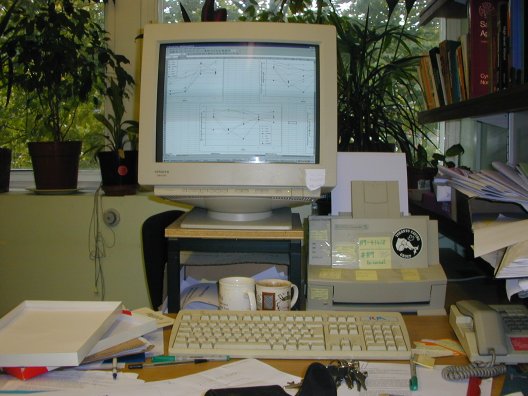Rebecca Lawson's Research Interests My research investigates diverse aspects of the efficiency of processing of the human visual object recognition system. I am particularly interested in how we achieve visual object constancy and how we categorise visual stimuli. I conduct empirical research which measures the speed and accuracy of human performance at recognising familiar objects in the face of disruptive object transformations such as plane and depth rotation and image fragmentation. I also manipulate memory and attentional demands on experimental participants, for example in investigating performance on dual processing (psychological refractory period) tasks. My experiments are generally computer based, and present relatively impoverished but familiar stimuli for recognition. For example, a typical experiment would require the speeded naming of line drawings of common objects such as dogs and chairs. In recent studies I have also investigated the learning of novel categories of visual shapes. Much of my research investigates the performance of the intact visual system. In addition, I am interested in the problems which certain neuropsychological patients suffer as a consequence of brain injury and in computational models of human visual object recognition. |
|
|
Try your hand at my web experiment and help me to collect some data:
| |
Also take a look at the Visual Perception website here at the University of Liverpool:
Publications, submitted papers and papers in preparation
Jolicoeur, P., Corballis, M. C., & Lawson, R. (1998). The influence of perceived rotary motion on the recognition of rotated objects. Psychonomic Bulletin & Review, 5, 140-146.
Lawson, R. (1999). Achieving visual object constancy over plane rotation and depth rotation. Acta Psychologia, 102, 221-245.
Lawson, R. (2001). The role of horizontal and vertical axes of elongation in recognising disoriented objects. Under review.
Lawson, R., Bulthoff, H. H., & Dumbell, S. (2001). Interactions between shape changes and view changes in picture-picture matching. In preparation.
Lawson, R. & Humphreys, G. W. (1996). View-specificity in object processing: Evidence from picture matching. Journal of Experimental Psychology: Human Perception and Performance, 22, 2, 395-416.
Lawson, R. & Humphreys, G. W. (1998a). View-specific effects of depth rotation and foreshortening on the initial recognition and priming of familiar object. Perception and Psychophysics, 60, 6, 1052-1066.
Lawson, R. & Humphreys, G. W. (1998b). The neuropsychology of visual object constancy. In V. Walsh & J. Kulikowski (Eds.), Perceptual Constancies: Why things look as they do. Cambridge: Cambridge University Press.
Lawson, R. & Humphreys, G. W. (1999). The effects of view in depth on the recognition of line drawings and silhouettes of familiar objects. Visual Cognition, 6, 2, 165-195.
Lawson, R., Humphreys, G. W., & Jolicoeur, P. (2000). The combined effects of plane disorientation and foreshortening on picture naming - one manipulation or two? Journal of Experimental Psychology: Human Perception and Performance, 26, 2, 568-581.
Lawson, R., Humphreys, G. W., & Watson, D. G. (1994). Object recognition under sequential viewing conditions: Evidence for viewpoint-specific recognition procedures. Perception, 23, 595-614.
Lawson, R. & Jolicoeur, P. (1998). The effects of plane rotation on the recognition of brief masked pictures of familiar objects. Memory and Cognition, 26, 4. 791-803
Lawson, R. & Jolicoeur, P. (1999). Effects of plane orientation and prior experience for recognition thresholds of pictures of familiar objects. Memory and Cognition, 27, 4, 751-758.
Lawson, R. & Jolicoeur, P. (2001). Recognition thresholds for plane-disoriented pictures of familiar objects. Under review.
Lawson, R. & Statton, L. (2001). The effects of context on learning to achieve view-invariance over plane-rotation for the identification of familiar objects. Under review.
Lawson, R. & Todd, J. (2001). The role of within-category and between-category comparisons in learning novel visual categories. In preparation.
![]() The University of Liverpool Home Page
The University of Liverpool Home Page
![]() The Department of Psychology Home Page
The Department of Psychology Home Page
| |
| |
| |
| |
